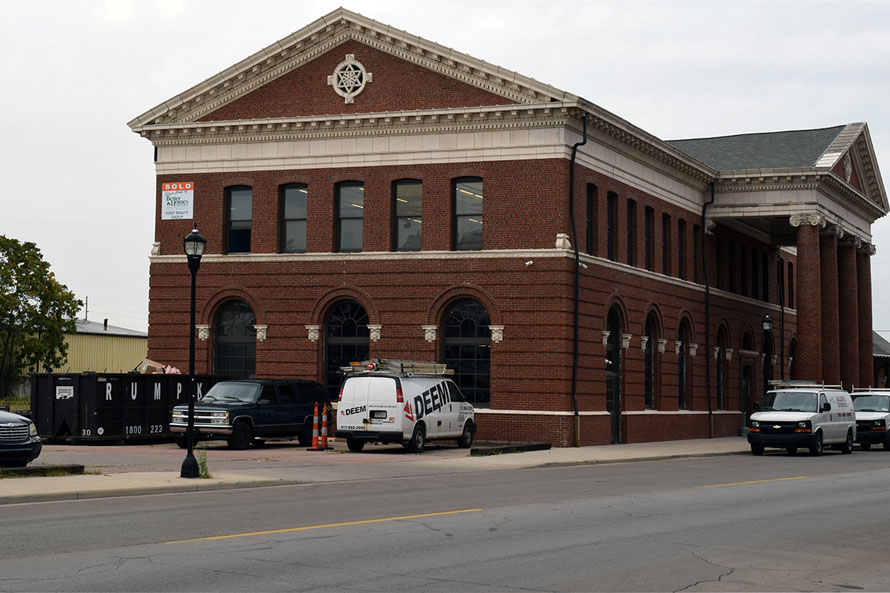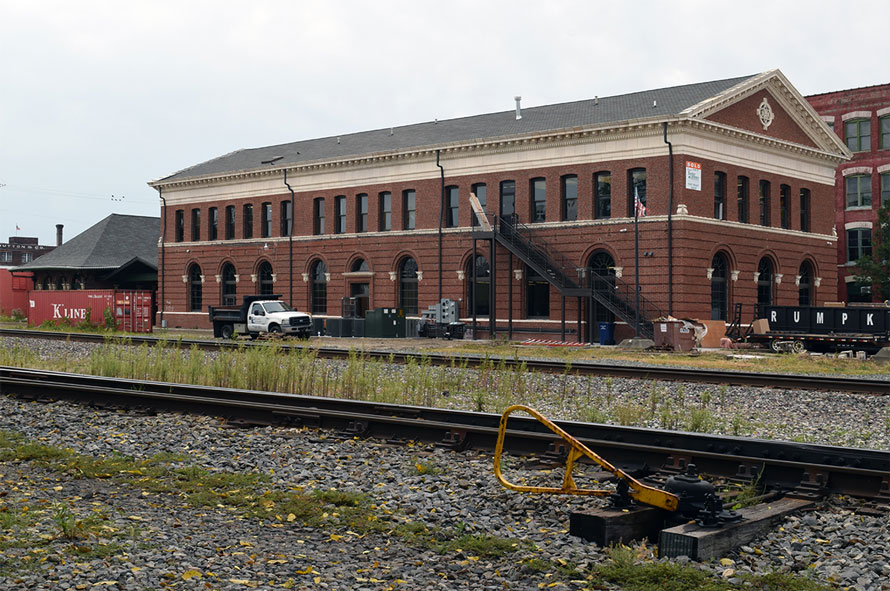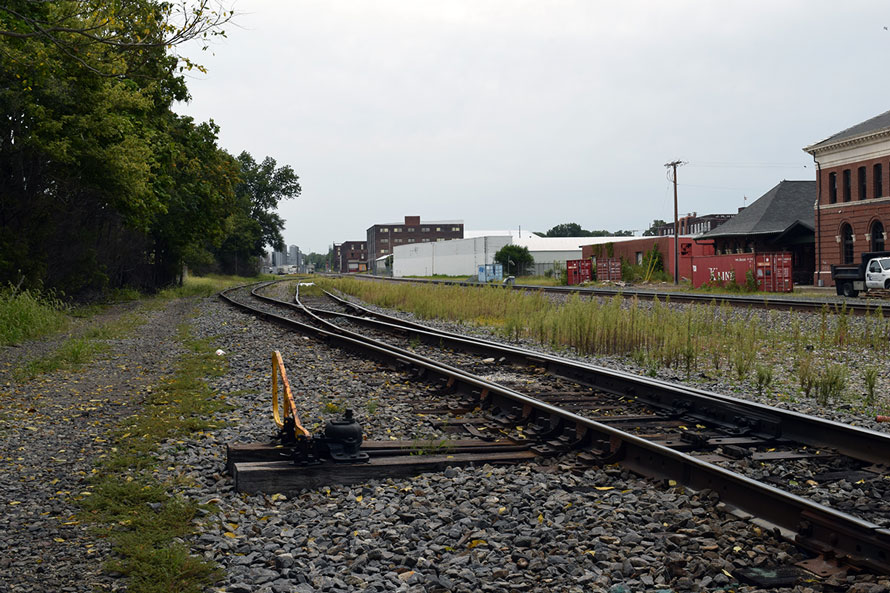I have a fondness for steam radiators. That gentle heat soaks right down to the bone and although the houses I grew up in didn’t have them, the Pennsylvania depot did.
From the time I was five or six years old my dad and I made a pilgrimage to watch trains at the Pennsylvania Railroad depot in Richmond, Indiana every Sunday morning. The waiting room was our refuge from the cold and I was never very far from one of those big radiators.

The main objects of our quest were two westbound passenger trains that were still on the Pennsy’s schedule in the 1960s. My memory is faulty where the early train is concerned, though a check of a 1960 timetable suggests it might have been No. 71 or the Cincinnati Limited.
Later in the morning, No. 3, the westbound Penn-Texas was the prime catch. Put on the schedule in 1948, her heyday was over by the 1960s and two E-units were the regular power. She sometimes had three and on one memorable occasion, four E7s or 8s on the point, towing head-end equipment, coaches, a full dining and kitchen car combo with several Pullmans bringing up the rear. Even though the glory days of the Standard Railroad of The World had passed, the PRR still knew how to put on a show.
It was a far different world in the 1960s. I could go out on the multi-track platforms without restriction and my favorite vantage point (under dad’s ever watchful eye) was the center platform where I could look to the east down Track One for a headlight coming around the distant curve by Glen Yards. Once spotted, I would retreat to the safety of the canopy next to the station while the train glided into the depot and eased to a stop.
The fundamental reason this location draws me is the emotional connection of those times spent with my dad.
A flurry of activity commenced as the engines were refueled. Baggage handlers exchanged any baggage or mail, while passengers disembarked or boarded as needed. Soon, the boss gave two tweets on the train line that he was ready to roll. With the engineer’s get-out-of-the-way twin blasts from the air horn, the crossing watchman lowered the gates at Eighth Street as she eased out of the station, around the curve next to Newman Tower and Purina and then out of sight. It was a cold weather spectacle with steam coming from every leaky joint in the consist.
There was a lull between trains and we would often head down to the bridge at Nineteenth Street over the west entrance to Glen Yards. Nothing much ever happened there on a Sunday and any action we did catch was icing on the cake. Sometimes a yard engine would be shuffling around or there might be a flurry of activity near the turntable. One never knew.
Though the platforms are gone and passenger service is no longer part of the scene, Richmond’s former PRR depot survives stronger than ever thanks to a multi-million dollar restoration due to its historical significance as a design of noted Chicago architect Daniel Burnham. A local realtor is relocating their offices to the building and the interior fit-out is nearing completion. The building will once again know the pulse of activity after sitting dormant for too many decades. It’s the cornerstone of the neighborhood and without it, this would be just another ordinary stretch of railroad, instead of a place where the past lingers in memory and the heart.

What is the power of a place?
Today I keep coming back to this two-track yard where Norfolk Southern sorts out the cars for Primex Plastics in the background. As mundane as it appears at first glance, there is something here that I respond to and I’ve learned to trust those hunches.

As one of three locations that forged my earliest connections to railroading, this spot is the only one that bears any resemblance to the past in terms of the physical structure and railroad activity that I remember. As a child I seldom saw this view, as the location I’m shooting from was less accessible in those days. Located on the north side of the depot, these two tracks are the remnant of the PRR’s freight by-pass through the station. Looking east in the photo, both tracks ran from Glen Yards and continued on toward the west and the interlocking at Newman Tower, where trains would be routed in one of three directions after crossing the bridge over the Whitewater Gorge.
From a photography perspective, I like this composition for the way the tracks and access road leads the eye into the scene along with the framing provided by the trees on the left. Overall, this is a simple composition with a sense of calm that allows you to study the image without feeling hurried to take it all in. While not to everyone’s taste, I find myself returning to it again and again to discover new layers of interest. It’s railroading I can understand and relate too. However, the fundamental reason this location draws me is the emotional connection of those times spent with my dad.
In that sense, this is my railroad.
Michael L. Cougill – Photographs and text Copyright 2017
Michael, very evocative and well done piece. I think many of us have similar emotional connections with railroads, passenger trains, and family. I know I certainly do with my Grandfather and PRR trains arriving from NYC at Bay Head NJ. Thank you for sharing.
Thank you Bob.
I remember the first time I made it trackside to watch railroading in northern Vermont. With a budget that forced decisions between film and fuel for a car that might not tolerate the drive from my Canadian home to this place, I knew “what” I was going to and only had to hope I’d make it there and, eventually, back. I suppose, in a way, I went in response to a kind of invitation I’d received in the form of black and white photos from the pages of the books I’d collected. I went by myself and wouldn’t of known who I’d announce my intentions to or share my experiences with, even if that desire had crossed my mind. I went to step into someone else’s story in the hope of finding my own.
This story changes a well-honed style to become something of personal experience that is annotated by the common language of railroading. It’s not about whether or not my connection to Pennsy diesels is equal to Mike’s. It’s that even if I don’t have that same connection I know one like it and that connects us.
I often share a copy of this blog with friends in the hope of communicating the richness this interest represents to me. It’s relatable and human and reminds us of how railfanning is more than just trains and time trackside is more than just waiting for trains. Thank you for providing a place to share these stories. Thank you as well for inviting these stories and sharing them with the rest of us. This blog is unlike anything I’ve seen in the hobby and I look forward to each new post.
Thank you
Chris
Thanks, Chris. I am very proud of the work that all the contributors to this site do and it is good to hear that you appreciate their work. Edd Fuller, Editor